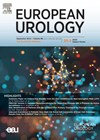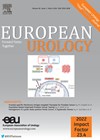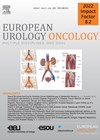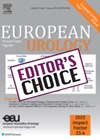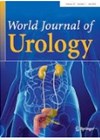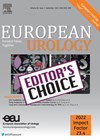
Journal Reviews
Tissue-based biomarkers steering clinical decisions in patients with urothelial cancer
Biomarkers play an essential role in the diagnosis and treatment of urothelial cancer (UC), with PD-L1, FGFR, and MMR proteins being the most clinically established. These biomarkers, derived from histological specimens, guide therapeutic decisions for bladder cancer (BCa) and upper...
Are standard repeat biopsies during active surveillance for prostate cancer still necessary?
Active surveillance (AS) has emerged as a key strategy for managing low-risk prostate cancer (PCa), offering an alternative to immediate treatment. Initially, AS relied on prostate specific antigen (PSA) testing, digital rectal examinations (DRE), and systematic biopsies. Early studies using...
Cost effectiveness of prostate cancer screening in Europe
Prostate cancer (PCa) stands as the most prevalent cancer and the third leading cause of cancer-related deaths among men in Europe. According to data from the European Commission, in 2020, PCa represented a staggering 23.2% of all new cancer cases...
First and second-line treatments in metastatic renal cell carcinoma
Over the past two decades, the treatment landscape for metastatic renal cell carcinoma (mRCC) has evolved significantly, leading to a quadrupling of patient survival rates. Modern systemic treatments include combinations of anti-PD-1 antibodies with either anti-CTLA-4 antibodies or antiangiogenic tyrosine...
PSA screening in limbo: how low should we go?
One may wonder how the management of prostate cancer could have evolved differently if it had followed a path similar to breast cancer. In breast cancer, early detection in the 1970s relied heavily on imaging because no reliable circulating biomarker...
Treatment options for renal cell carcinoma
In this issue of European Urology, experts review advancements and challenges in treating renal cell carcinoma (RCC), emphasising the complexity of managing a disease with an expanding array of therapeutic options. Despite significant progress, critical questions remain about treatment sequencing,...
How to handle the opening market in robotic surgery
In the latest edition of European Urology, Thillou et al. present a groundbreaking case series comprising 10 instances of robotassisted radical prostatectomy (RARP) procedures conducted using the innovative Dexter robotic system by Distalmotion SA, Épalinges, Switzerland. This marks the maiden...
All biochemical recurrences are equal, but some are more equal than others
Despite significant technological advancements, radical prostatectomy (RP) and radiotherapy (RT) are not always effective in curing localised prostate cancer (PCa). Many patients experience a rise in prostate-specific antigen (PSA), known as biochemical recurrence (BCR), leading to considerable anxiety and a...
Patients’ preferences for additional (cytoreductive) treatments to the prostate and metastasis in metastatic prostate cancer
Patients diagnosed with metastatic prostate cancer at first diagnosis or de novo synchronous metastatic hormone-sensitive prostate cancer (mHSPC) have had reported increases in overall survival due to rapid advances and intensification of systemic therapy regimes beyond traditional androgen deprivation therapy...
Prostate cancer mortality among elderly men after discontinuing organised screening
This study presents ground-breaking insights into discontinuing prostate cancer (PCa) screening in previously screened elderly men, aiming to mitigate the risk of overdiagnosis and overtreatment in the face of other-cause mortality. Examining men aged 70–74 who had undergone prostate specific...
Urethral stenosis after radiation therapy for prostate cancer
One of the most common causes of bladder outflow obstruction in post radiotherapy (RT) cases is urethral stenosis. These cases are miserable and moribund with poor flow rates, incomplete bladder emptying, recurrent urinary tract infections and haematuria. The reported incidence...
Phase two trial of SAbR for primary RCC
A study focused on stereotactic ablative radiotherapy (SAbR) as a treatment for primary renal cell carcinoma (RCC) has yielded significant findings. The primary objective of the study was successfully met, demonstrating a 94% local control rate at one year among...

